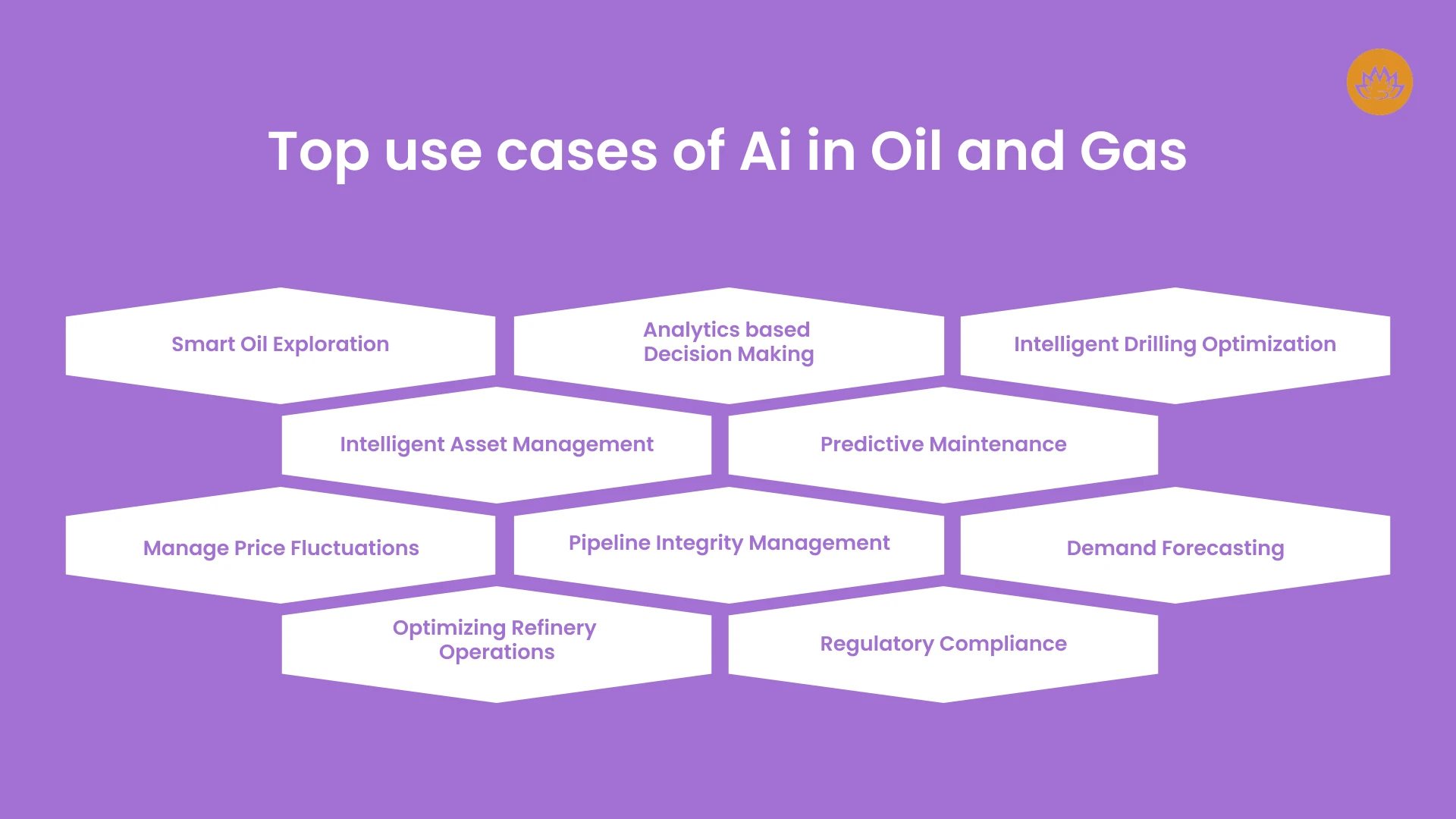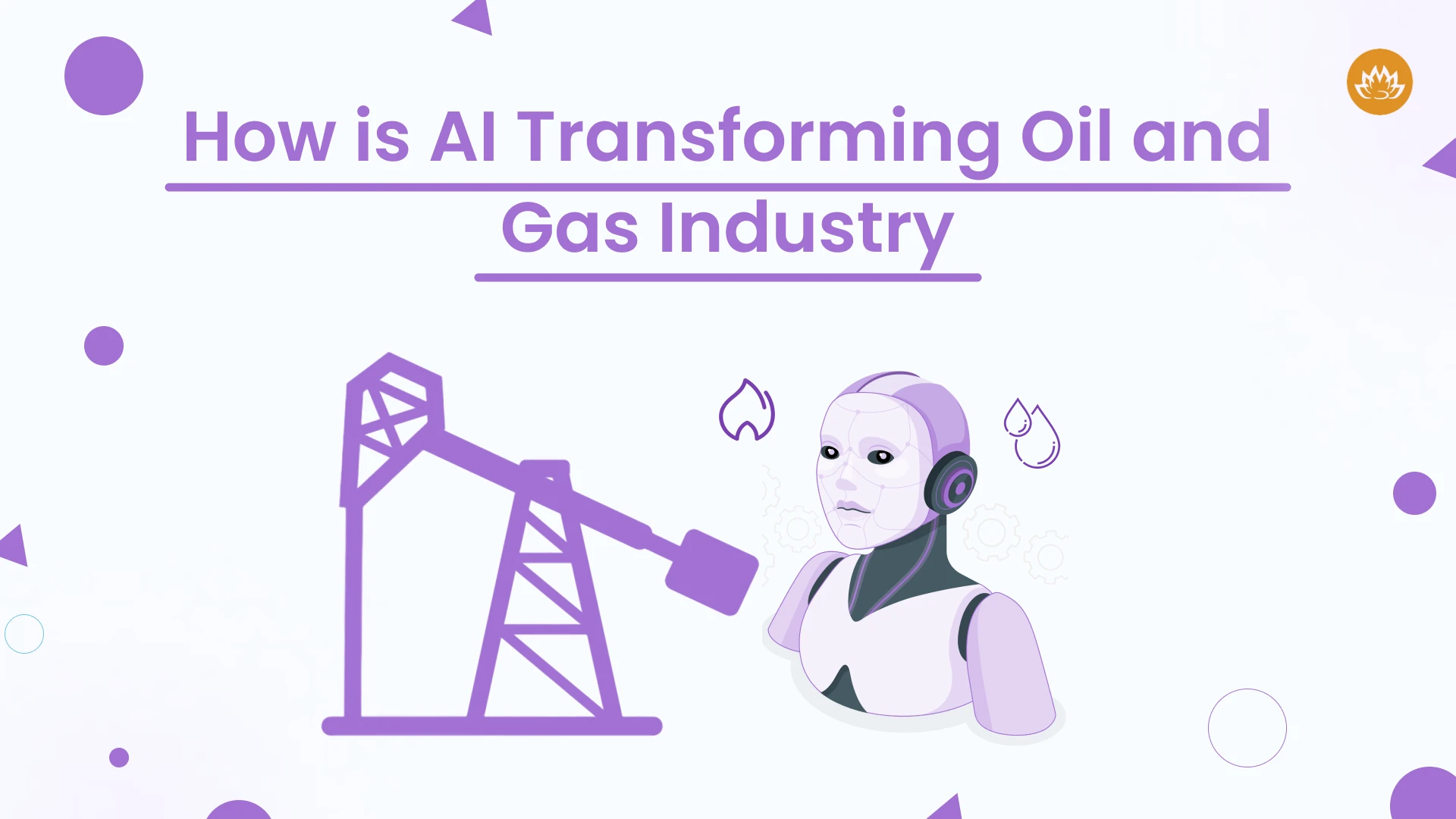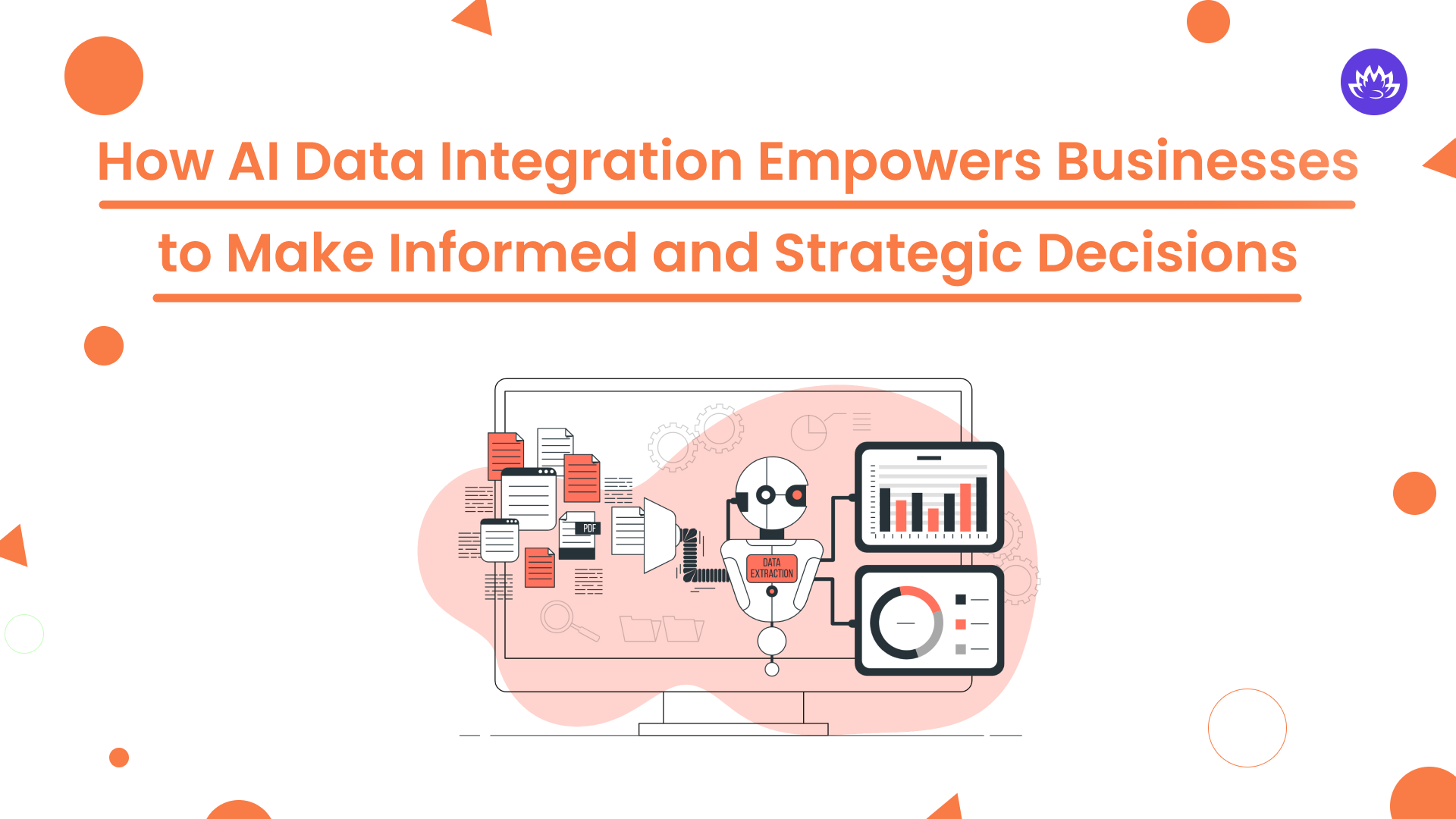One of the biggest and most lucrative businesses worldwide is the Oil and Gas Industry. The adoption of AI in this space has not just been considered a major technical advancement but has also proven to be a game changer. By the end of 2025, the oil and gas AI market will be around $3.81 bn compared to a $2bn market in 2019. Another survey by Ernst and Young reveals that 92% of oil and gas enterprises globally have invested in AI. AI systems have a phenomenal power to change the ways companies work today. Especially, some of the major processes and operational workflows involved in numerous oil and gas companies have been streamlined and facilitated by AI today.
However, a few sections of the world still follow the obsolete patterns of manually operated tools, using pen and paper to monitor production data and various supply chain managers are still struggling with market fluctuations and unpredictable figures. The rise of AI is so rapid and intense that in a few years, it will take over the entire oil and gas sector. It will perform numerous functions such as optimizing oil exploration, streamlining production and logistics, and driving overall efficiency and safety.
So let us head over to some of the top AI use cases that impact reshaping the oil and gas industry. Tools like the Field inspection app have revamped the core systems and increased the company returns tenfold.
Top Use Cases that are Reshaping the Oil and Gas Industry

Smart Oil Exploration
Geologists need to explore new oil reserves and seeps frequently. AI adoption in these processes has enabled the exploration teams to analyze massive datasets of geological formations, seismic surveys, satellite imagery, and historical well logs. Through these AI-driven systems, they can find potential oil reservoirs and the land and the ocean with great accuracy. For example, ExxonMobil used AI models to analyze real-time seismic data, and historical drilling data, to predict any fractures in tight reservoirs, enhance the overall flow, and to optimize well placement. Hence, it clearly states the rise in the use of data-driven analytics and visualization capabilities in the exploration segment.
Intelligent Asset Management
The oil and gas industry deals with constant asset monitoring and management. Most of the assets in this field are utilized more than fifty percent of their capacities. So equipment reliability is an important factor of asset management. With regard to this, the digital twins concept has brought in an exceptional change in asset management.
A digital twin is the mirror-like asset of the on-field asset. The wonder is it can reflect and replicate the exact attributes and features of the physical asset like compressors, pumps, turbines, and pipelines. This enables virtual monitoring of on-field assets. It harnesses high-quality data to showcase the asset performance. The digital asset gets updated with the latest operational data and information such as schematics, maintenance history, and troubleshooting process. Here, a centralized repository is created of the asset data, which is analyzed by AI algorithms in real-time. It can identify variations from usual patterns such as:
- Can trace the early signs and phases of asset failure. It provides proactive equipment maintenance by collecting real-time information from the sensors. Hence, it prevents any unplanned downtime, elongates asset lifetime, and lowers operating and maintenance costs.
- Can reduce the high costs of asset maintenance by reducing the need for any extra personnel.
Analytics based Decision Making
There is a lot of siloed data that oil and gas companies generate such as reservoir characterization, drilling time, seismic and microseismic data, shipping and transportation, performance and recovery, etc. The challenge lies in harnessing this precious data and using it in the right manner to derive useful insights or to make informed decisions.
The traditional method is to employ scientists for data analysis, which consumes a lot of time. AI-based systems and applications can create a unified data platform with knowledge-mining capabilities. It can search for information and can produce meaningful insights. With AI analytics and ML capabilities, oil and gas firms can obtain the following benefits in terms of decision-making:
- Can find out better drilling areas for production optimization
- Find out the economic viability of drilling to optimize cost production and improve efficiencies
- To practice predictive asset maintenance
- To optimize inventory management, procurement, and scheduling
- With AI chatbots they can send status reports on demand and answer employee questions
- AI and ML-driven multi-authentication and multi-layer security protect critical business data.
Characterization and Management of Reservoir
Managing the reservoir is a critical upstream operation. AI and ML tools help analyze reservoir data in various aspects such as pressure fluid flow and rock formations. It can anticipate reservoir characteristics and production optimization strategies. AI can also analyze huge amounts of geological data and can increase hydrocarbon recovery ratios. This can lead to an increase in the number of effective estimations of the size of reservoirs and resource extraction.
Intelligent Drilling Optimization
Drilling operations are very expensive unless you use AI-driven drilling capabilities. Drilling machines empowered with AI can analyze real-time data from sensors on the drill head. They can also manage the drilling trajectories and can optimize drilling operations. AI predictive analytics and data analytics enable companies to achieve rapid drilling speeds and minimize downtime.
Predictive Maintenance
AI-driven predictive maintenance has evolved companies in the ways of managing assets. It has led to better reliability and a reduction in operational risks. Conventional patterns are more inclined to practice schedules at fixed intervals, resulting in undue maintenance or uncertain breakdowns. With AI-driven solutions, the oil and gas industry can now predict several challenges and uncertainties through the analysis of massive sensor data, historical records, and real-time operational data. Hence, they can even predict equipment failures before their occurrence.
AI implementation in the oil and gas market has benefited several operations in oil refineries and pipelines and offshore rigs as well. ML algorithms can analyze data from the refining process and monitor the structural integrity of pipelines. Moreover, companies can also optimize maintenance schedules and augment the equipment’s lifespan.
Manage Price Fluctuations
There are many factors and economies involved in influencing oil and gas prices globally. Some of the most critical ones are the volatility of market dynamics, economic factors, and supply-demand imbalance. With various software development strategies driven by AI, companies can analyze market trends, historical pricing data, weather conditions, and geopolitical events that can help them estimate price changes with the nearest accuracy. In that manner, oil and gas companies can optimize their storage plans and maximize higher profits from investments.
Revamp Supply-Chain Management
Through AI-driven supply-chain management solutions, oil and gas companies can optimize supply chains, and facilitate efficiency and cost-effectiveness. AI power used in this sector can give access to advanced analytics and storage availability. It facilitates companies to optimize transportation strategies, saving time and money, reducing fuel consumption, and speeding up delivery timelines.
Pipeline Integrity Management
For midstream companies, pipeline integrity management ensures that oil and gas transportation is safe and the environment is protected. Through AI analytics, companies can constantly monitor sensor data and detect pressure fluctuations, mechanical failures, any leaks, and other loopholes that need to be addressed. Hence, implementing AI in the core business practices helps oil and gas enterprises to effectively identify pipeline integrity issues, preventing further environmental damage. It can also control any costly accidents and can ensure pipeline safety.
Automation of Back-office Procedures
This service is mostly needed by the midstream companies who mostly need to maintain a lot of paperwork and has to handle several administrative tasks. With the most advanced AI tools and technologies such as ML and robotics, oil and gas companies can automate repetitive administrative back-office processes. It can be processing invoices, generating reports, hiring processes, tracking approvals, scheduling maintenance plans, or managing contracts. AI implementation and integration will reduce manual mistakes and will manage routine mundane tasks. In this way, many resources get enough time to focus on resolving other important tasks that need more attention.
Demand Forecasting
AI integration models have facilitated refineries to analyze massive data with great accuracy. It can also analyze market trends, weather conditions, consumer behavior, and social media interactions. AI algorithms enable demand forecasts on a global front, thereby helping refineries to frame efficient production strategies, maintain inventory levels, and frame plans to meet market demands and ensure consumer satisfaction.
Oil Spill and Hydrocarbon Detection
For any oil and gas company, protecting the environment is the biggest concern. They cannot afford to have accidental oil spills during transportation or even during storage. This will have a significant impact on the environment. AI-powered monitoring systems will help companies detect oil spills and hydrocarbon leaks. This is made possible by analyzing satellite images and sensor data. With AI systems, companies can get rapid responses, reducing the overall environmental impact.
Optimizing Refinery Operations
AI-driven solutions help refinery companies automate complex data analysis, track operational inefficiencies, handle and check sensor data, and inspect several other tasks about refinery operations. Hence, several downstream companies can optimize and improve the overall process such as catalyst usage, temperature control, and product blending.
Regulatory Compliance
Meeting the compliance standards for oil and gas industry giants is very crucial. Here too AI can contribute in analyzing huge data regarding safety and compliance. It can help professionals craft effective regulatory compliance strategies that can provide valuable insight to check various comprehensive documentation and data sources. It can also help in identifying areas of improvement.

AI Case Studies in the Oil and Gas Sector
- Shell
The company uses the world’s most advanced and best AI-driven technologies such as reinforcement learning mechanisms to oversee drilling equipment. They collaborate with the best software development company to design smart AI tools that can train ML models on historical drilling data and provide real-time inputs on temperature and pressure. The drilling machinery adapts to the changing conditions and provides precise drilling outcomes.
- Total S.A
It is a French-based oil and gas company that partnered with Google Cloud to create AI solutions to streamline subsurface data analysis for production and exploration. It uses AI technologies to interpret subsurface images from seismic studies with computer vision and automate technical document analysis with NLP systems.
- ExxonMobil and MIT
ExxonMobile collaborated with MIT (Massachusetts Institute of Technology) to develop AI-driven tools for ocean exploration. The robots can find natural oil seeps on the seafloor and can detect these seeps.
Conclusion
The oil and gas industry is rigorously adopting AI at a great speed. The article above is a true testament to the kind of influence AI is having on the sector. Oil and gas companies are now operating intelligently by streamlining operations and production processes. Companies today have entered into a new world of accuracy, efficiency, high productivity, and complete safety. However, there is a need for a robust IT infrastructure and specialized expertise from a reputed mobile app development company that can create apps to manage and optimize the full potential of AI. Whitelotus Corporation can provide robust and innovative AI consulting services and can design futuristic mobile apps that can empower oil and gas enterprises to harness AI-powered solutions. You can trust our software development services as we have the best skills and resources to integrate AI into your oil and gas business operations.
The cost of developing pharmacy management software varies from region to region. In general, you can consider the average cost between $40000 to $500000 to create a high-performing pharmacy management software.
FAQs
What is the future of AI in the oil and gas industry?
The future of AI in oil and gas is bright and adaptive. Businesses will use AI-driven solutions at a higher ratio and will integrate AI to modernize their legacy systems. AI-driven advanced automation, precise data-driven insights, and providing personalized solutions will be the biggest changes in this sector.
What are AI applications in the oil and gas industry?
Reservoir analysis, detection of pipeline anomaly, drilling optimization, safety monitoring, and emissions reduction, improving exploration, production, and sustainable environment.
Author

Kirtan is CEO of Whitelotus Corporation, an emerging tech agency aimed to empower startups and enterprises around the world by its digital software solutions such as mobile and web applications. As a CEO, he plays key role in business development by bringing innovation through latest technical service offering, creating various strategic partnerships, and help build company's global reputation by delivering excellence to customers.
View all posts









